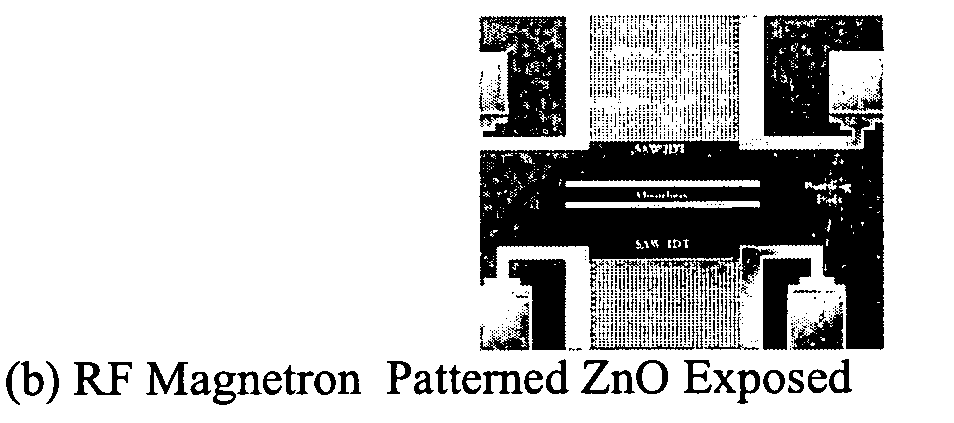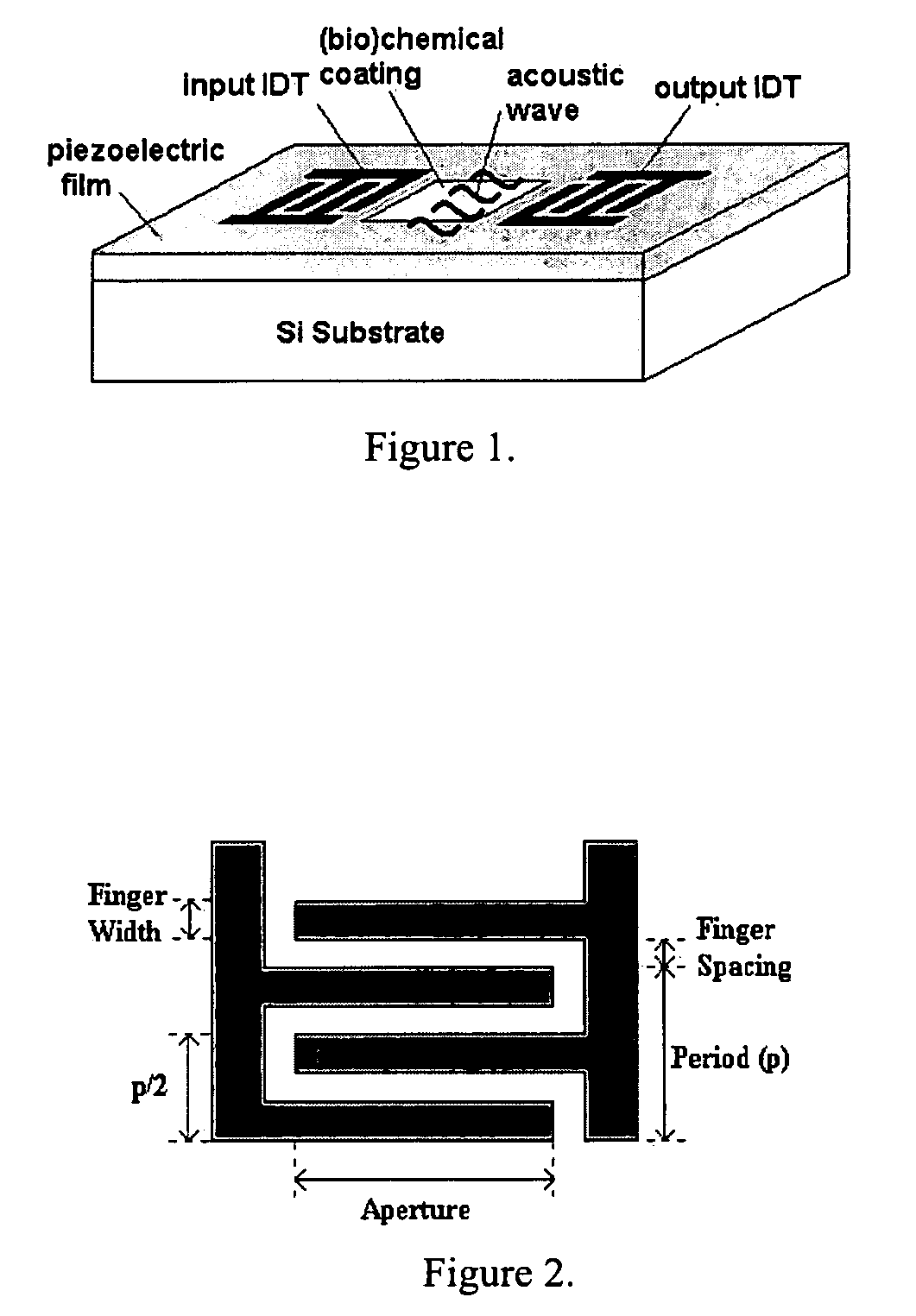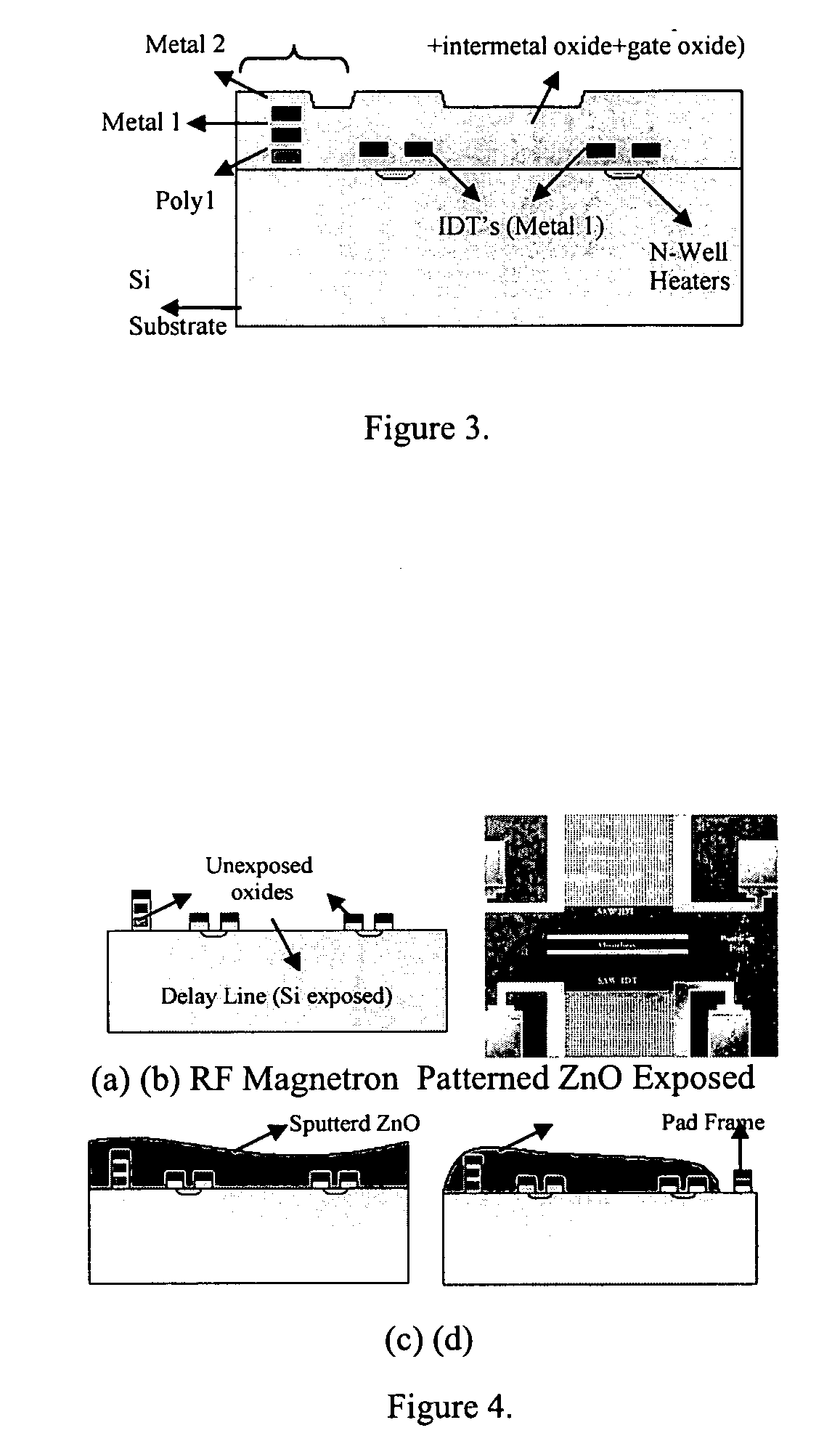Saw devices, processes for making them, and methods of use
- Summary
- Abstract
- Description
- Claims
- Application Information
AI Technical Summary
Benefits of technology
Problems solved by technology
Method used
Image
Examples
examples
[0113]In these example implementations, one deposition step is eliminated since standard CMOS metal layers are used to implement the transducers' structures. The maturity and precision of the standard 0.6 μm CMOS technology enables us to manufacture very well-defined metal features to implement the transducers, with minimum widths of 0.9 μm, resulting in very high frequency resonators of 1.02 GHz.
[0114]These examples present the design, fabrication, equivalent circuit model and characterization measurements of three two-port resonators. The design of the CMOS SAW resonators is described first, where the key design factors that affect the resonant frequency and quality factor are highlighted. Next, the fabrication sequence of implementing the surface acoustic wave resonators in CMOS with three additional post-processing steps is illustrated in detail. Characterization of the piezoelectric zinc oxide layer using x-ray diffraction, scanning electron microscopy (SEM) and atomic force mi...
example
V. Experimental Measurements and Discussion
[0137]The designed chip consisting of three resonators is shown in FIG. 17. To obtain S21 and S11 measurements, each resonator was probed using two coplanar G-S-G probes in the Cascade Microtech 9500 Parametric Probe Station connected to the HP8712 network analyzer. The coplanar probes were connected to the network analyzer using cables, SMA and N connectors. The experimental setup is shown in FIG. 18.
[0138]A Thru calibration structure was also included in the design to improve measurement accuracy. Both metal 2 and metal 1 in CMOS was used to implement the Thru structure. To avoid the probes crashing and damaging one another, the distance between the two probes was set to be 200 μm [19].
A. Analysis of Measurement Results
[0139]The S21 measurements provide the insertion loss (IL), series resonant frequency (fs) and parallel resonant frequency (fp). The S21 transmission magnitude and phase measurements as well as the S11 reflection measuremen...
PUM
| Property | Measurement | Unit |
|---|---|---|
| Length | aaaaa | aaaaa |
| Length | aaaaa | aaaaa |
| Length | aaaaa | aaaaa |
Abstract
Description
Claims
Application Information
 Login to View More
Login to View More - R&D
- Intellectual Property
- Life Sciences
- Materials
- Tech Scout
- Unparalleled Data Quality
- Higher Quality Content
- 60% Fewer Hallucinations
Browse by: Latest US Patents, China's latest patents, Technical Efficacy Thesaurus, Application Domain, Technology Topic, Popular Technical Reports.
© 2025 PatSnap. All rights reserved.Legal|Privacy policy|Modern Slavery Act Transparency Statement|Sitemap|About US| Contact US: help@patsnap.com



